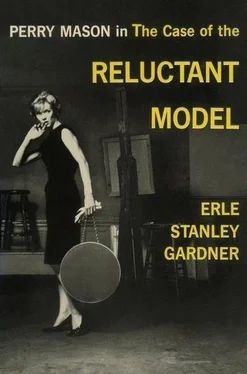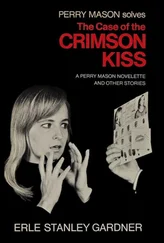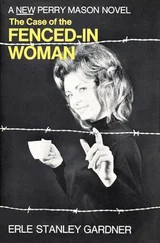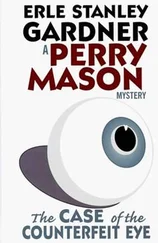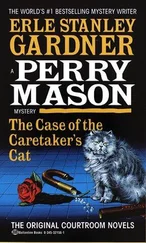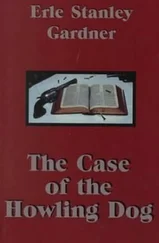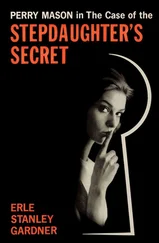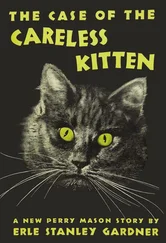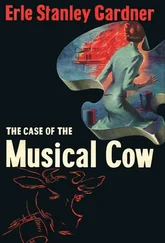“And what was the caliber of that gun?”
“Twenty-two.”
“What else can you tell us about that weapon?”
“It was a nine-shot revolver. Three of the chambers had been fired. There were three empty shells in the cylinder and six loaded cartridges. The gun was registered in the name of the defendant.”
“And what can you tell us about the three twenty-two caliber bullets which were handed to you by Dr. Foley?”
“They had all been fired from this gun.”
“You may cross-examine,” Dexter said.
“No questions,” Mason said smiling.
Judge Madison said, “It now having reached the noon hour, gentlemen, Court will adjourn until one-thirty this afternoon. The defendant is remanded to custody.”
Mason, Della Street and Paul Drake gathered in the little private dining room of the restaurant near the Hall of Justice where they habitually had lunch when trying a case in court.
When they had given their orders, Mason got up and started pacing the room.
“The secret of the thing is that damned gun,” he said.
“It’s Maxine’s gun, all right.”
“Of course it’s her gun,” Mason said. “It’s registered in her name. But there has to be something more in connection with it.”
“What more would they need?” Drake asked.
“Maxine’s story,” Mason said, “is that she kept the gun in a drawer by the bed in her apartment. Anyone who was familiar with the apartment would know where she kept the gun. Anyone could have taken the gun and committed the murder.”
“And then left the gun where?” Della Street asked.
“Presumably someplace in the apartment,” Mason said.
“But we didn’t see it there,” Della pointed out. “That is, the murderer didn’t simply drop it on the floor.”
Mason nodded. ‘That doesn’t mean it couldn’t have been there. It could have been put back in the drawer.”
“That’s about the only place it could have been,” Drake said. “If Maxine had taken it with her, she’d have told you, wouldn’t she?”
“Heaven knows,” Mason said. “You can’t tell what a client will do, particularly a woman client. They get enmeshed in a series of events that seem to trap them and they almost invariably try to deceive their attorneys.”
“Well,” Drake said, “it quite definitely wasn’t in her possession when she was taken into custody.”
“Suppose she’d hidden it somewhere,” Della Street said.
“Then the police wouldn’t have found it at all,” Drake said. “I don’t think you have anything to worry about on the gun except the fact that it’s hers, Perry. That gives the prosecution all of a case that it needs against Maxine, at least for the preliminary hearing.”
“They’ve got something else,” Mason said, and resumed moodily pacing the floor.
Suddenly he paused and said, “Paul, I want you to find out if you can how often Olney has used his yacht during the past three months. I’d like to have you find out something about the caretaker system there at the yacht club; how many persons are there as caretakers or watchmen. In other words, how many people we would have to screen if we wanted to determine whether bribery had been used to get aboard the yacht. We’ve got to find out more about the particular bunco game that Durant was playing.”
“It seems to me it’s quite simple,” Drake said. “He gets someone to make a fake painting. Then he passes the word around that a reputable art dealer has sold a wealthy collector a fake picture. The art dealer gets mad, the man who has purchased the picture becomes furious, they get a bunch of art experts to appraise the picture and then file suit against Durant.
“Then Durant manages to substitute the forged painting for the original. The case comes to court. Durant proves the picture is a forgery and cashes in.”
Mason resumed pacing the floor.
“You don’t think so?” Drake asked.
“I don’t know,” Mason said. “He told Maxine it was a forged painting. He checked to see if she’d told Rankin that the painting was false. All of that fits into the picture — but the guy got ten thousand dollars somewhere and he told Maxine to get out of town. Now why do that?
“If the painting hadn’t been forged, then he wanted Maxine away where no one could prove what he’d said. If he could show it was a forgery, then Maxine’s testimony wouldn’t make a particle of difference.
“The two theories are diametrically opposed in some of their aspects. Why did he want the painting forged in the first place? Why want Maxine out of town in the second place?
“There has to be something in the case we don’t know, some vital factor we either don’t have or are overlooking.”
Abruptly Mason turned to Paul Drake. “Paul, hurry through your lunch. Then go up to court, get a bunch of subpoenas for the defendant and subpoena all the persons who had anything to do with that painting business. I want Otto Olney, I want that expert, George Lathan Howell — and check on the records of the time the yacht has been out. See if you can find out how much of the time Olney has been there. And while you’re about it, check on Olney’s home life. Find out something about Mrs. Olney. Serve a subpoena on her. Apparently they don’t have too much in common, and Olney has been spending a lot of time on his yacht lately. While there’s been no formal separation, nevertheless there’s every indication his domestic relations aren’t too cordial.”
The waiter brought their food.
“How about Goring Gilbert?” Drake asked. “You want him subpoenaed?”
“I’ve had a subpoena duces tecum on him,” Mason said. “He is directed to be there this afternoon with the forged painting.”
“That’s going to cause something of a commotion?”
“I don’t know. I served this subpoena duces tecum ordering him to appear with any painting he had painted in the style of those painted by Phellipe Feteet, and in particular any painting that showed native women gathered under a tree with kids playing in the background and sunlight on green foliage as a far background.”
“Think he’ll show up?”
“If he doesn’t, I’ll raise such a commotion that everyone in the prosecutor’s office will wish he had. I’m going to try my darnedest to get that picture into evidence.”
“Will Dexter try to keep you from getting the picture in evidence?” Della Street asked.
“He’ll fight like a bronco steer,” Mason said. “We’ll have to drag him every inch of the way.”
“Why?”
“First,” Mason said, “because he thinks it may complicate the situation and secondly because he’s going to try to force me to put Maxine on the stand so that I can lay the foundation for bringing in this picture. If she testifies that Durant told her to go to Rankin and tell him about the false Feteet, then the whole thing becomes admissible. But any attorney who puts his client on the stand during a preliminary hearing in a murder case is generally considered a likely candidate for the insane asylum.
“All the defendant can do by her testimony is to raise a conflict in the evidence, and no committing magistrate is going to resolve such a conflict against the prosecution; unless, of course, it brings up a point which conclusively demolishes the whole theory of the prosecution, and the chances of doing that are just about one in ten thousand.”
“You have done it, haven’t you?” Della Street asked.
“I did it in two cases,” Mason said. “They were both extreme cases. I knew that by putting the defendant on the stand I could lay the foundation for evidence which would otherwise be inadmissible, and that evidence effectively sabotaged the prosecution’s case.”
Читать дальше
